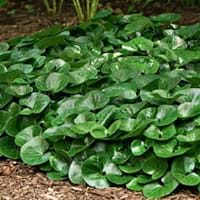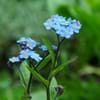Life Span
Perennial
Annual and Perennial
Type
Flowering Plants, Shrubs
Broadleaf Evergreen
Origin
Africa, America, Asia
Western Europe
Types
Lockinch, Petite Indigo, White Profusion
Not Available
Number of Varieties
Not Available
Habitat
Along Railroads, River side, Roadsides
gardens, Lake Sides, Marshy ground, shade of upland trees, Shaded sites, Subtropical climates
USDA Hardiness Zone
5-10
4-8
AHS Heat Zone
9-2
Not Available
Sunset Zone
H1, 2a, 2b, 3a, 3b, 4, 5, 6, 7, 8, 9, 10, 11, 12, 13, 14, 15, 16, 17, 18, 19, 20, 21, 22, 23, 24
Not Available
Habit
Arching/Fountain-shaped
Spreading
Flower Color
Blue, Pink, Purple, Red, White
Green, Purple, Brown
Flower Color Modifier
Not Available
Bicolor
Fruit Color
Not Available
Not Available
Leaf Color in Spring
Gray Green
Dark Green
Leaf Color in Summer
Gray Green, Light Green
Dark Green
Leaf Color in Fall
Gray Green, Light Green, Yellow green
Dark Green
Leaf Color in Winter
Not Available
Dark Green
Leaf Shape
Egg-shaped
Cushion
Plant Season
Fall, Spring, Summer, Winter
Spring, Summer, Fall, Winter
Sunlight
Full Sun, Part sun, Partial shade
Partial shade, Full Shade
Type of Soil
Loamy, Sandy, Well drained
Loam
The pH of Soil
Neutral, Slightly Acidic, Slightly Alkaline
Acidic, Neutral
Soil Drainage
Well drained
Well drained
Bloom Time
Spring
Late Spring
Tolerances
Drought, Pollution, Salt, Soil Compaction
Not Available
Where to Plant?
Ground, Pot
Container, Ground
How to Plant?
Seedlings, Stem Planting, Transplanting
Divison, Rhizome division
Plant Maintenance
Medium
Low
Watering Requirements
Form a Soil ring to water efficiently, Water Deeply, Water twice a day in the initial period
Average Water Needs
In Summer
Lots of watering
Average Water
In Spring
Moderate
Moderate
In Winter
Average Water
Average Water
Soil pH
Neutral, Slightly Acidic, Slightly Alkaline
Acidic, Neutral
Soil Type
Loamy, Sandy, Well drained
Loam
Soil Drainage Capacity
Well drained
Well drained
Sun Exposure
Full Sun, Part sun, Partial shade
Partial shade, Full Shade
Pruning
Cut or pinch the stems, Prune for shortening long shoots, Prune if you want to improve plant shape, Prune ocassionally, Remove damaged leaves, Remove dead or diseased plant parts, Remove deadheads, Remove shoots
Don't prune in winter, Prune in spring, Remove dead branches, Remove dead leaves
Fertilizers
All-Purpose Liquid Fertilizer
All-Purpose Liquid Fertilizer
Pests and Diseases
Downy mildew, Leaf spot, Spider mites
Ants, Slugs, Snails
Plant Tolerance
Drought
Not Available
Flowers
Yes
Insignificant
Flower Petal Number
Single
Not Available
Foliage Texture
Medium
Medium
Foliage Sheen
Matte
Glossy
Attracts
Butterflies, Hummingbirds
Insects
Allergy
Vomiting
no allergic reactions
Aesthetic Uses
Showy Purposes
Showy Purposes
Beauty Benefits
Not Available
No Beauty Benefits
Environmental Uses
Air purification
Air purification
Medicinal Uses
Not Available
Ear ache, Fever, Heart problems, Menstrual Disorders, Snakebite
Part of Plant Used
Flowers, Leaves
Whole plant
Other Uses
Showy Purposes, Used as Ornamental plant
Not Available, Used in making tooth powder
Used As Indoor Plant
No
No
Used As Outdoor Plant
Yes
Yes
Garden Design
Edging, Feature Plant, Foundation
Edging, Groundcover
Botanical Name
Buddleia davidii
ASARUM europaeum
Common Name
Butterfly Bush, Summer Lilac, Butterflybush
European Wild Ginger
In Hindi
Butterfly Bush
यूरोपीय जंगली अदरक
In German
Schmetterlingsstrauch
Europäische Wild Ginger
In French
buisson de papillon
Wild Ginger européenne
In Spanish
arbusto de las mariposas
Wild Ginger Europea
In Greek
Butterfly Μπους
Ευρωπαϊκή Wild Ginger
In Portuguese
arbusto de borboleta
Wild Ginger Europeia
In Polish
Butterfly Bush
Kopytnik pospolity
In Latin
papilio rubo
Gingiberi Europae Wild
Phylum
Spermatophyta
Magnoliophyta
Class
Dicotyledonae
Magnoliopsida
Family
Scrophulariaceae
Aristolochiaceae
Clade
Angiosperms, Asterids, Eudicots
Angiosperms, Magnoliids
Tribe
Not Available
Not Available
Subfamily
Not Available
Not Available
Number of Species
Not Available
Season and Care of Butterfly Bush and European Wild Ginger
Season and care of Butterfly Bush and European Wild Ginger is important to know. While considering everything about Butterfly Bush and European Wild Ginger Care, growing season is an essential factor. Butterfly Bush season is Fall, Spring, Summer and Winter and European Wild Ginger season is Fall, Spring, Summer and Winter. The type of soil for Butterfly Bush is Loamy, Sandy, Well drained and for European Wild Ginger is Loam while the PH of soil for Butterfly Bush is Neutral, Slightly Acidic, Slightly Alkaline and for European Wild Ginger is Acidic, Neutral.
Butterfly Bush and European Wild Ginger Physical Information
Butterfly Bush and European Wild Ginger physical information is very important for comparison. Butterfly Bush height is 7.50 cm and width 4.00 cm whereas European Wild Ginger height is 6.35 cm and width 27.30 cm. The color specification of Butterfly Bush and European Wild Ginger are as follows:
Butterfly Bush flower color: Blue, Pink, Purple, Red and White
Butterfly Bush leaf color: Gray Green
European Wild Ginger flower color: Green, Purple and Brown
- European Wild Ginger leaf color: Dark Green
Care of Butterfly Bush and European Wild Ginger
Care of Butterfly Bush and European Wild Ginger include pruning, fertilizers, watering etc. Butterfly Bush pruning is done Cut or pinch the stems, Prune for shortening long shoots, Prune if you want to improve plant shape, Prune ocassionally, Remove damaged leaves, Remove dead or diseased plant parts, Remove deadheads and Remove shoots and European Wild Ginger pruning is done Don't prune in winter, Prune in spring, Remove dead branches and Remove dead leaves. In summer Butterfly Bush needs Lots of watering and in winter, it needs Average Water. Whereas, in summer European Wild Ginger needs Average Water and in winter, it needs Average Water.





